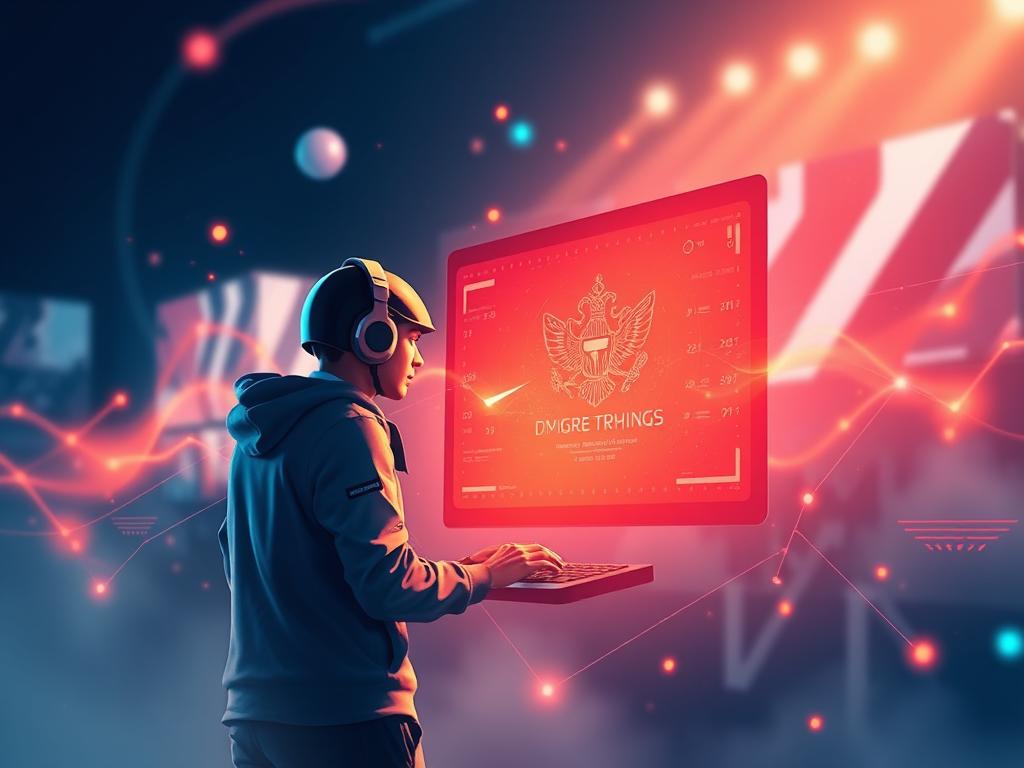In the fast-paced world of esports, staying ahead means being up-to-the-second informed. Real-time updates in esports platforms are no longer a luxury, but a necessity that transforms how players, fans, and developers engage with the game. Whether it’s instantly receiving match stats, live commentary, or player rankings, these updates bring a dynamic and immersive experience that keeps the gaming community hooked. Today, as technology evolves at lightning speed, the future of real-time updates is brimming with promise—and challenges—that could redefine esports as we know it.
Understanding Real-Time Updates in Esports Platforms
At its core, real-time updating means providing data as events happen without noticeable delay. In esports, this technology powers everything from live game stats to instant leaderboard changes, seamless streaming overlays, and interactive chat rooms. Unlike traditional sports, esports thrives on digital ecosystems where every pixel and data point can convey critical information to enhance engagement.
The real magic lies in how esports platforms integrate multiple data sources and distribute updates efficiently to millions of users simultaneously. This synchronization demands sophisticated backend infrastructures, often combining cloud computing, edge servers, and APIs that feed various applications like mobile apps, websites, and broadcast tools. For fans, this means never missing a game-changing moment; for players, it means accurate feedback; and for developers, it means creating a competitive edge and richer experiences.
Technologies Powering Real-Time Updates

Several cutting-edge technologies make real-time updates in esports platforms possible and increasingly powerful:
- WebSockets and Push Notifications: These enable instant communication between servers and user devices, allowing seamless updates without refreshing the page.
- Cloud Computing: Cloud platforms offer scalable resources to handle massive data loads and serve global audiences with low latency.
- Artificial Intelligence and Machine Learning: AI helps analyze gameplay in real-time, providing insights like player performance predictions, which then update live on leaderboards and broadcasts.
- Blockchain Technology: Emerging as a tool for secure data validation, blockchain ensures transparency especially for betting and prize distribution updates.
By combining these technologies, esports platforms can deliver smoother, more reliable real-time experiences that bring every game’s excitement to the forefront.
The Role of Data in Enhancing Real-Time Experiences
Data is the heartbeat of real-time updates. Esports platforms collect vast amounts of information during tournaments—from player health stats to environmental variables (like ping times and server loads). These inputs are analyzed and shared instantly to provide meaningful content. For example, in a match, feeds might show damage dealt per second, heat maps of player movements, or the exact moment a player picks up a crucial item.
The challenge lies in processing and delivering this complex data in ways that make sense to viewers. Visualizations, such as dynamic graphs and colorful overlays on live streams, help translate raw stats into engaging narratives. The future promises even more immersive analytics, with augmented and virtual reality integrating live data to create “in the game” experiences for viewers.
Upcoming Trends Shaping Real-Time Updates in Esports
Exciting trends are on the horizon, poised to reshape the landscape of real-time updates across esports platforms:
| Trend | Description | Impact on Esports Platforms |
|---|---|---|
| 5G Connectivity | Ultra-fast, low-latency mobile internet | Enables quicker data transmission, enhancing mobile esports viewing and participation |
| Edge Computing | Processing data closer to end users | Reduces lag, improves real-time content delivery and responsiveness |
| Advanced AI Analytics | Real-time predictive insights and personalized content | Offers tailored updates and smarter broadcast highlights |
| Interactive Streaming Features | Allow fans to choose camera angles, access stats, and participate in chats | Creates a more immersive and engaging viewer experience |
| Blockchain for Transparency | Verifiable updates on tournament results and prize distribution | Builds trust among players and audience, especially in competitive integrity |
With these advancements, esports platforms will not only offer rapid information but also a more personalized, engaging, and trustworthy environment for everyone involved.
Challenges and Considerations for Developers
While the future promises tremendous potential, implementing real-time updates is no simple task. Developers face several hurdles:
- Latency Management: Minimizing delays across global networks is critical. Even small lags can weaken the “real-time” feel.
- Data Accuracy and Validation: Ensuring the data feeding updates is error-free is essential to maintain credibility.
- Scalability: Platforms must handle sudden surges in users during major tournaments without compromising performance.
- Security: Protecting the integrity of real-time data streams against hacking or manipulation is paramount.
- User Experience: Updates should enhance rather than overwhelm users, requiring intuitive UI designs.
Addressing these concerns demands ongoing innovation and collaboration between game developers, platform providers, and networking specialists.
Impact on Players, Fans, and the Gambling Community
The ripple effect of real-time updates extends far beyond just impressing fans. For players, timely performance data facilitates strategic decisions and training improvements. Coaches can track competitors’ tendencies live and adjust tactics on the fly.
For fans, the excitement of live updates makes watching esports more interactive and socially engaging. Features such as real-time voting, live statistics dashboards, and instant replay snippets keep the audience engrossed.
The gambling community also benefits significantly. Real-time updates provide the foundation for live betting, enabling punters to place wagers during matches based on evolving game states. This requires platforms to push updates that are not only fast but also ultra-reliable and secure, protecting fairness.
How Esports Platforms Can Prepare for the Future

Moving forward, esports platforms should adopt several strategies to effectively integrate real-time updates:
- Invest in Robust Infrastructure: Embracing cloud and edge computing technologies to ensure rapid delivery and scaling under heavy loads.
- Enhance Data Pipelines: Creating efficient systems to gather, process, and distribute data with minimal latency and errors.
- Prioritize User-Centric Design: Crafting intuitive interfaces that make real-time data accessible and enjoyable for all user types.
- Develop Partnerships: Collaborate with telecom providers to leverage 5G and other emerging networks, and with security experts to safeguard data.
- Utilize AI Smartly: Beyond data gathering, use AI for predictive analytics and personalized content delivery to elevate user engagement.
By focusing on these areas, esports platforms will be well-poised to capture the full benefits of real-time updates, attracting larger audiences and boosting competitive integrity.
The Role of Community Feedback
A vital but sometimes overlooked element in evolving real-time updates is community feedback. Players and viewers who actively participate in esports often have unique insights into what updates matter most, how information is consumed, and what pitfalls to avoid. Regularly incorporating this feedback helps platforms refine update frequency, content types, and UI design choices to better match user preferences.
Together, these efforts create a virtuous cycle of engagement: better updates boost audience excitement, which attracts more participation, which provides more data and feedback, leading to further improvements.
Conclusion
The future of real-time updates in esports platforms is an exciting frontier where technology, community, and competition intersect. As gaming becomes more global and interactive, the ability to deliver instant, accurate, and engaging updates will define the success of esports platforms. Harnessing innovations like 5G, AI, edge computing, and blockchain while carefully balancing user experience and security promises to transform how players, fans, and even gamblers experience esports. For developers and stakeholders, the message is clear: investing deeply in real-time capabilities and listening closely to community needs will pave the way for the next generation of immersive, dynamic esports ecosystems.

